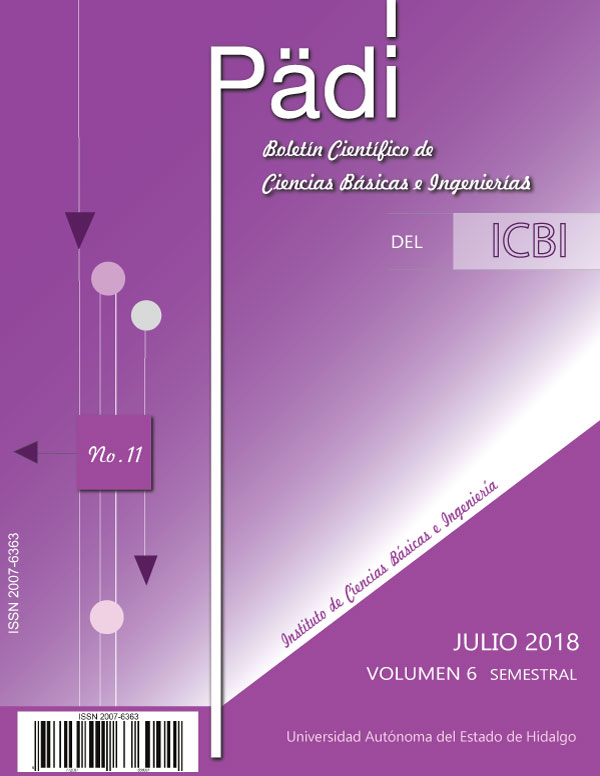Microbiological methods to mitigate pollution problems generated by cellulose and paper industry
Abstract
Despite the idea that paper is a sustainable material, the process for its production implies great consumption of water and electricity and the generation of many pollutants. The sustainability of this material rely on its recyclability, however, worldwide only 55% of total production is recycled. There are some biotechnology options that could help mitigate the pollution generated by this industry, for example, production of cellulose through bacteria, biopulping through enzymes and treatment of effluents by microorganisms. Although these options do not constitute a total solution to the problem, they could be part of an answer.
Downloads
References
Ali, M., Sreekrishnan, T. R. (2001). Aquatic toxicity from pulp and paper mill effluents: a review Advances in Environmental Research, 5, 175-
Arias-Orozco, P., Bastida-Gonzáles, F. G., Salgado-Manjarrez, E., Zárate-Segura, P. B., Arias-Orozco, P., (2012) Produccón de enzimas lignoceluloliticas en fermentacion sumergida y sólida a partir de residuos sólidos orgánicos. Memorias XVIII Congreso Nacional de Ingeniería Bioquímica. Ixtapa-Zihuatanejo Guerrero, México., 28 al 30 de Marzo.
Bellido, C. (2003). Obtención de bioetanol 2g a partir de hidrolizados de paja de trigo. Fermentación conjunta de los penta y hexa carbohidratos con Pichia stipitis. Tesis Doctoral. Universidad de Valladolid. España.
Cañas, A., Camareno, S. (2010). Laccases and their natural mediators: Biotechnological tools for sustainable eco-friendly processes Biotechnology Advances. 28, 694-705.
Chávez- Pacheco, J. L., Martínez-Yee, S., Contreras-Zentella, M., Escamilla-Marván, E. (2004). Celulosa bacteriana en gluconacetobacter xylinum: biosíntesis y aplicaciones. Tip Revista Especializada en Ciencias Químico-Biológicas, 7, (1), 18-25
Chawla, P. R., Bajaj, I. B., Survase, S.A., Singhal, R.S. (2009). Microbial Cellulose: Fermentative Production and Applications. Food Technol. Biotechnol., 47, (2), 107-124.
FAO (2015) Food and Agriculture Organization of the United Nations. Yearbook statistics. Forest Products. [pdf en línea]. http://www.fao.org/3/a-i7304m.pdf
Garcia-Sanchez, M. E., Jimenez-Palomar, I., Gonzalez-Garcia, Y., Robledo-Ortiz, J. R. (2016). Bacterial Cellulose Produced by Gluconacetobacter xylinus Culture Using Complex Carbon Sources for Biomedical Applications. Materials Research Society, 36, (1), 2563-2564
Nobuyuky, R., Araújo, C., Melo, L. M., Pereira, N. (2013). Cellulase production by Penicillium funiculosum and its application in the hydrolysis of sugar cane bagasse for second generation ethanol production by fed batch operation. Journal of Biotechnology, 163, 38-44.
Sánchez, E. R. (2006). Caracterización molecular de lacasas de Pleurotus eryngii: expresión heteróloga de estas enzimas y aplicaciones en la degradación de contaminantes aromáticos. Tesis doctoral. Universidad Complutense de Madrid Facultad de Ciencias Biológicas, Madrid, España.
Saratale, R. G., Saratale, G. D., Chang, J. S., Govindwar, S. P. (2011). Bacterial decolorization and degradation of azo dyes: A review. Journal of the Taiwan Institute of Chemical Engineers, 42, 138-157.
Sekar, W., Makhmudun, D., Ari, H. (2015). The production of bioethanol fermentation substrate from Eucheuma Cottonii seaweed through hydrolysis by cellulose enzyme. Agriculture and Agricultural Science Procedia, 3, 200-205.
Singh, P., Thakur, I. S. (2006). Colour removal of anaerobically treated pulp and paper mill by microorganisms in two steps bioreactor. Bioresourse Technology, 97, 218-223
Singhal, A., Thakur, I. S. (2009). Decolourization and detoxification of pulp and paper mill effluent by Cryptococcus sp. Biochemical engineering journal, 46, 21-27
Vilaseca, M. M.(2001). Observación microscópica de fangos activados en los tratamientos de depuración biológica. Boletín INTEXTER Universidad Politécnica de Catalunya, 67-72
Wahono, S. K., Rosyida, V. T., Darsih, C., Pratiwi, D., Frediansyah, A., Hernawan. (2015). Optimization of Simultaneous Saccharification and Fermentation Incubation Time Using Cellulose Enzyme for Sugarcane Bagasse on The Second-Generation Bioethanol Production Technology. Energy Procedia, 65, 331-336
Wertz, J. L., Bédué, O., Mercier, J. P. (2010). Cellulose Science and Technology. 1st Ed. EPFL Press Taylor and Francis Group. Boca Ratón FL.
Zhu, H., Luo, W., Ciesielski, P. N., Fang, Z., Zhu, J. Y., Gunnar, H., Himmel, M. E., Hu, L. (2016). Wood-Derived Materials for Green Electronics, Biological Devices, and Energy Applications. Chem. Rev., 116, 9305-9374












